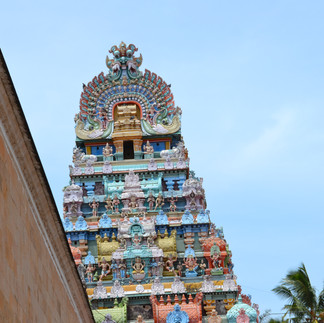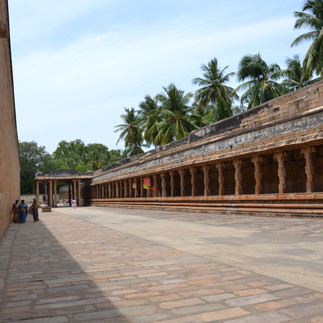Temples of Tamil Nadu and Pondicherry #34: Jambukeswarar Temple, Thiruvanaikaval
- Sudharshan
- Mar 26, 2024
- 2 min read
Updated: Dec 11, 2024
ஜம்புகேசுவரர் திருக்கோயில் திருவானைக்காவல்
This vast 18 acre temple complex situated on the island of Srirangam between the Kaveri and the Kollidam in Tiruchirapalli, is one of the most important Sivasthalams in Tamil Nadu. It is close to the Ranganathar Temple at Srirangam. It is a Paadal Petra Sthalam and has been praised in Thevaram by all three of the Moovar, Thirugnasampanthar, Thirunavukkarasar and Sundarar. It is one of the five Panchabootha Sthalams and venerates water. The others are Chidambaram Natarajar (sky or space), Kanchipuram Ekamabareswarar (earth), Thiruvannamalai (fire) and Srikalahasti (ether or air).
This place used to be a bamboo forest in ancient times and there is a legend about an elephant who worshipped Lord Shiva here. Hence the name. Aanai is Tamil for elephant and Kaa is old Tamil for forest. The temple site was called Thiruvanaikkaa in ancient texts. It later evolved into Thiruvanaikkaal, Thiruvanaikaval and Thiuvanaikoil over time. Given the antiquity of the temple, there are many legends about it.
The sanctum sanctorum contains a Sivalingam that is always partially submerged in water due to a natural spring present there. It has 5 prakarams or circumambulatory hallways. The prakarams are very wide and spacious. The architecture and sculptural work here are exceptional and rival the design of the Ranganathar nearby.
Legend says that the original construction was by the second century Sangam era Chola king Kochengannan - The Red-Eyed-King. He is credited with building many temples in this area. Later Chola and Pandian kings contributed to it over time. The Hoysala king Someswara renovated it and built many of the sub-shrines in the complex in the mid 13th century. Later dynasties like the Vijayanagara emperors and the Thanjavur and Madurai Nayakkar contributed to its expansion and maintenance. The temple sustained damage from English and French armies during the Carnatic wars in the 18th century. The trading community of Nattukkottai Chettiar renovated and maintained the temple during the 19th and 20th centuries. Today the temple is controlled and administered by the Hindu Religious and Charitable Endowments Department of the Government of Tamil Nadu, the HR and CE.
We visited in July 2012. We stayed in Trichy.

Credits: Google Maps















Comments